OK, I’m really not a birder per say, but do enjoy all forms of wildlife and of course increased my life list while visiting Kruger National Park in South Africa. Plus I have many birder friends I’ve been promising photos of Kruger birds.
I’m not sure how to break these up so will give it my best shot. Little tidbits of information I’m finding on various websites about Kruger birds. All info starts top left and works clockwise.
Big Birds
The African Fish Eagle, in my mind, is at the top of this list. Although it feeds extensively on fish it is also known to eat carrion and is classified as a kleptoparasite (it steals prey from other birds). The Brown Snake Eagle often hunts venomous snakes by crushing their heads to discharge the venom plus the thick, scaly skin on their legs protects them from bites. The Bateleur Eagle is the most famous snake eagle. And the Wahlberg’s Eagle is probably the most common eagle in Africa.
The Dark Chanting Goshawk is named for its melodious singing voice, especially during breeding season, which is unusual for Accipiters. The Red-footed Falcon migrates to Southern Africa during European winters where it is listed as “Near Threatened” due to habitat loss. The Little Sparrow Hawk is distinguishable by the two white spots on the upper side of its central tail feathers, which contrast with the dark upper parts, and by a white bar on the rump.
The Kori Bustard is Africa’s heaviest bird weighing up to 41 lbs (19kg) and are ground dwellers, hence the name bustard meaning birds that walk, but will fly only when necessary. The Lappet-faced Vulture is classified as “Vulnerable” due to widespread accidental poisoning used by many farmers for predator control. The White-headed Vulture is one of Africa’s most colorful vultures and this one got lucky eating a tortoise run over by a vehicle which are otherwise very tough to crack.
Long-legged birds
Marabou Storks have a bald head because they are scavengers. The Saddle-billed Stork is the tallest stork in Africa. The Black Stork is about the same size as the White Stork, which is known to nest on houses, does not bring babies.
This Yellow-billed Stork spent quite a bit of time fishing.
The Goliath Heron is the largest of all living herons with a wingspan of 6 1/2 feet (2 m). The Black-bellied Korhaan, or Bustard, is another walking bird and is considered slow so that’s probably why I got a decent photo. This shows the female—light colored—and male Ostrich and although they are flightless can run 40 mph (64 km).
The Wattled Lapwing, or Plover, is a large wader with a rather interesting mustache. The Blacksmith Lapwing, or Plover, is named for its repeated metallic ‘tink, tink, tink’ alarm call – which sounds similar to a blacksmith’s hammer striking metal. The Hamerkop is well named with its large hammer-shaped head and usually live in pairs.
Kingfishers
The Woodland Kingfisher seldom eats fish however the Giant Kingfisher does.
Hornbills
The Red-billed Hornbill’s first two neck vertebrae are fused to support its large bill. This one may look familiar as Zazu, a character in the animated film The Lion King, is an African red-billed hornbill. The Southern Ground Hornbill is the largest hornbill in the world and is named for its habit of walking on the ground as it feeds.
Owl
When the Scops-Owl is disturbed during the day, it can elongate its body and lean sideways, which helps resemble the branches it roosts on. In fact we’d have never seen this one if the caretaker at the picnic area hadn’t shown us.
Colorful birds
The European Roller migrates from its European or Asian breeding grounds over 6,000 miles (10,000 km) in one of Africa’s most spectacularly visible migrations. The Lilac-breasted Roller is only partially migratory. Rollers get their name from their impressive courtship flight, a fast, shallow dive from considerable elevation with a rolling or fast rocking motion, which unfortunately I didn’t get to see.
The European Bee-eater also escapes European winters and migrates to South Africa. (Just call me a bee-eater.) As the name indicates, they eat honey bees and deal with the stingers by wiping the insects abdomen on a branch to discharge the sting. Southern Carmine Bee-eaters are known to perch on large animals and circle cars to catch insects.
African Hoopoe appears on the Logo of the University of Johannesburg and is the official mascot of the University’s sports. Lesser Masked Weavers, like other Weavers, actually weave grasses to create nests. The Long-tailed Paradise Whydah lays its eggs in the nests of the Green-winged Pytilia and the whydah chicks are larger and louder than the host chicks.
Misc
Fork-tailed Drongos are aggressive and fearless birds, given their small size, and will attack much larger species, including birds of prey if their nest or young are threatened. Green-backed Heron, or Striated Heron, sometimes use bait, dropping a feather or leaf carefully on the water surface and picking fish that come to investigate. Magpie Shrike, also known as the African Long-tailed Shrike, is a facultative cooperative breeder, meaning that the breeding pair are assisted by 1-3 helpers who are usually juveniles from the previous brood. Egyptian Geese are aggressively territorial towards their own species when breeding and frequently pursue intruders into the air, attacking them in aerial dogfights.
I guess Barn Swallows are pretty much the same world wide but I always have trouble getting a photo of even one let alone this many.
Breakfast
Joan and I had an ongoing joke about several birds we saw quite frequently that are relatively slow and might make a good meal. Coqui Franklin is believed to be the most widespread francolin in Africa and they were everywhere. This Emerald-spotted Wood Dove seemed very interested in what we were having for breakfast like begging pigeons do. Helmeted Guineafowl are prone to run rather than fly when alarmed. The Double-banded Sandgrouse is what it is.
So even though I’m not Really a birder I tried my best to take photos of Kruger birds. At least we didn’t drive around with a sign on the truck saying “Slow, Birders.”
Linked to Wild Bird Wednesday where you can see lots of birds from around the world.

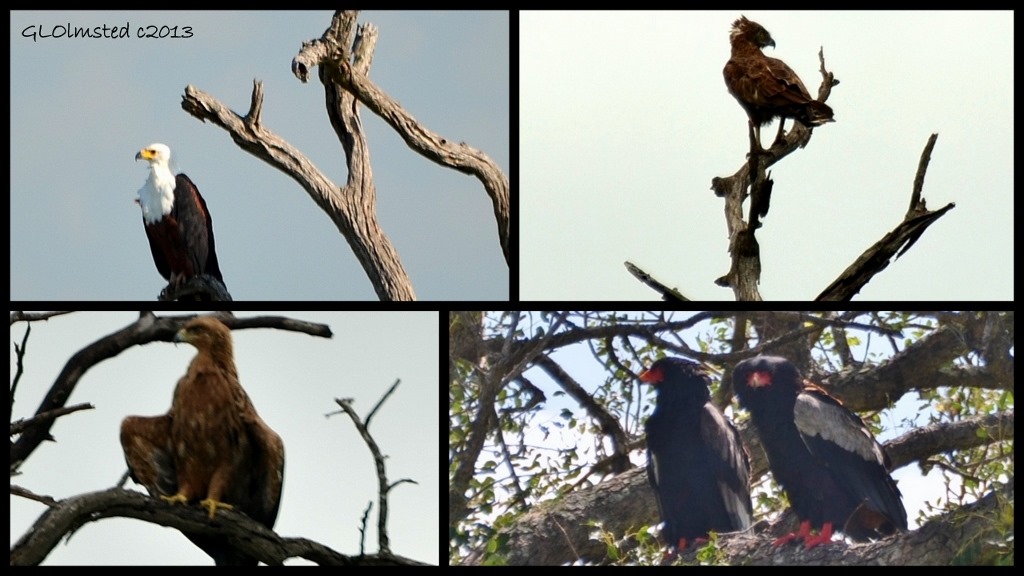
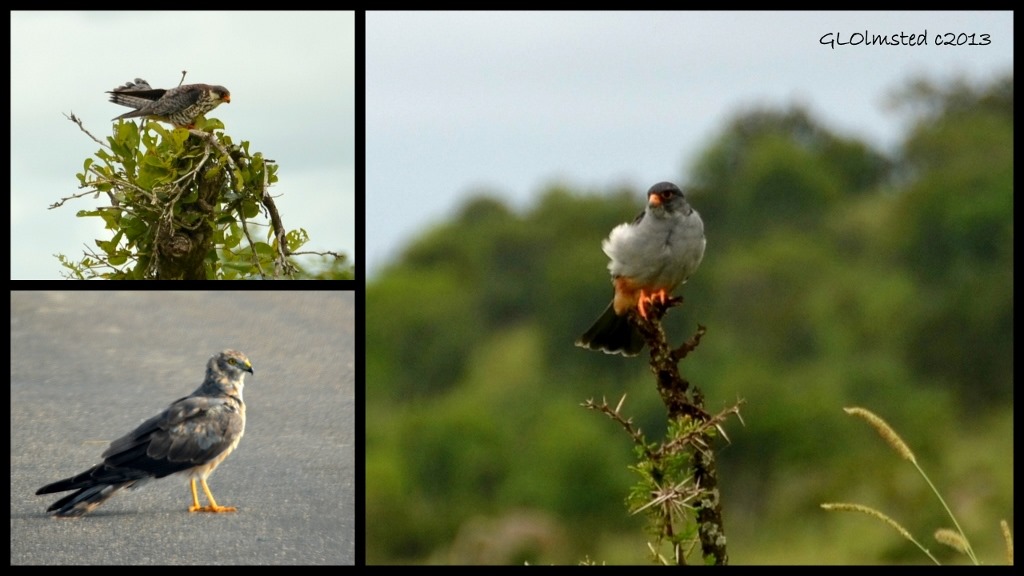
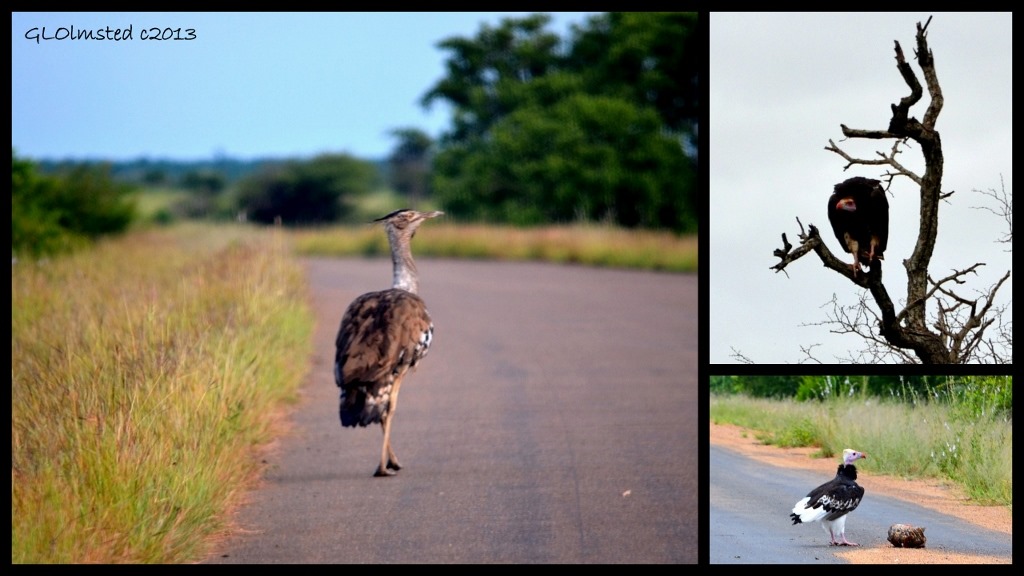
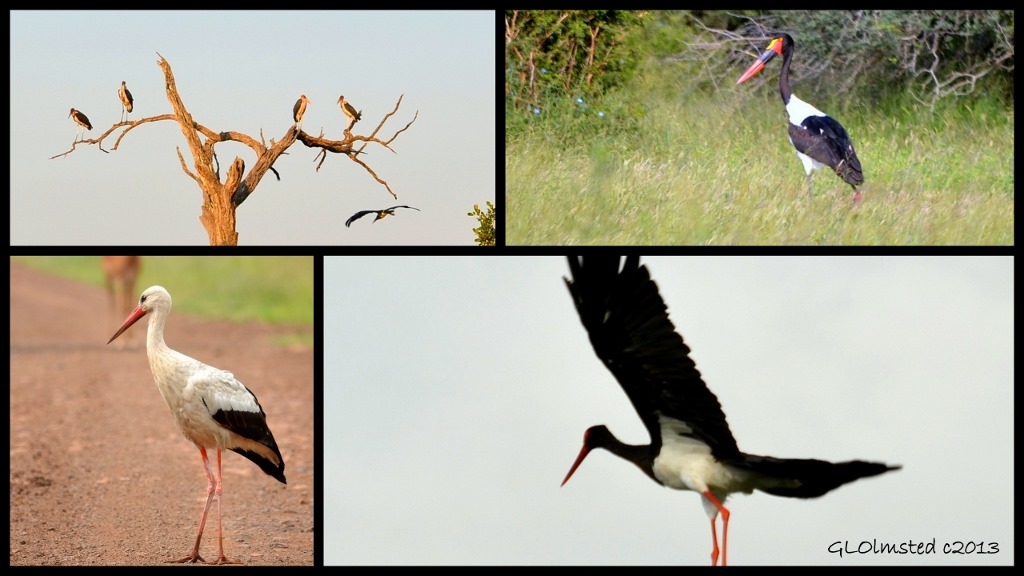
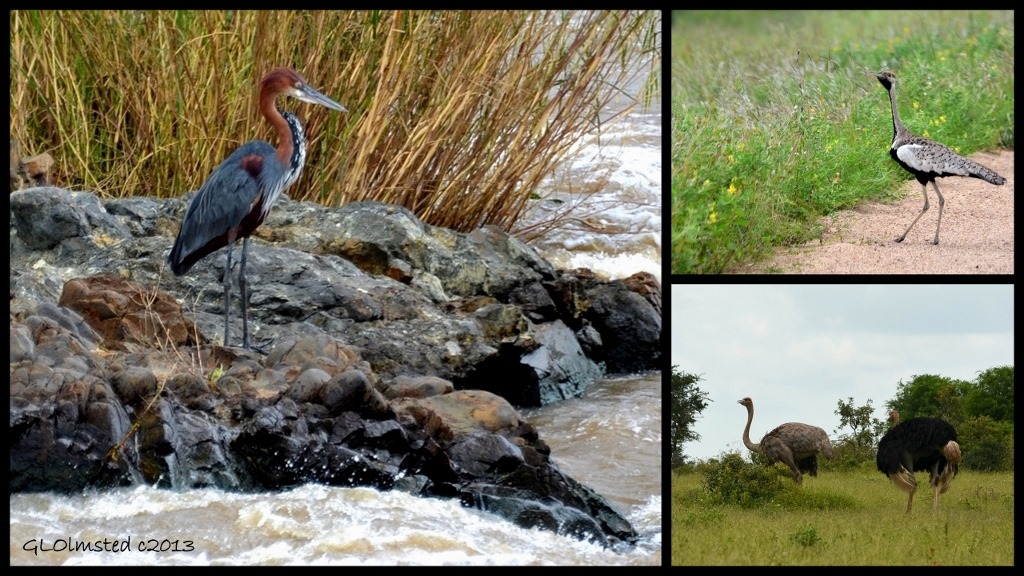
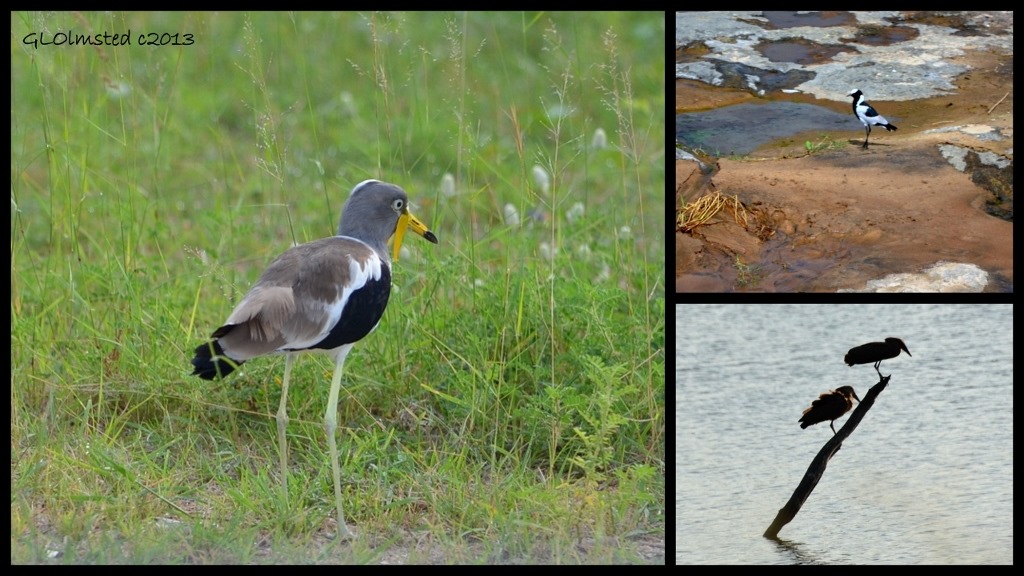
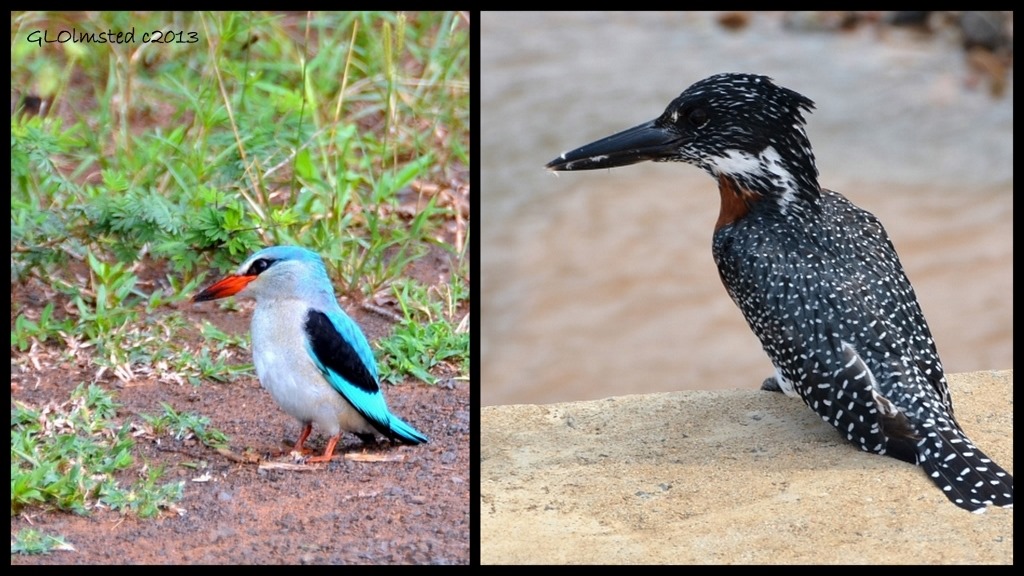


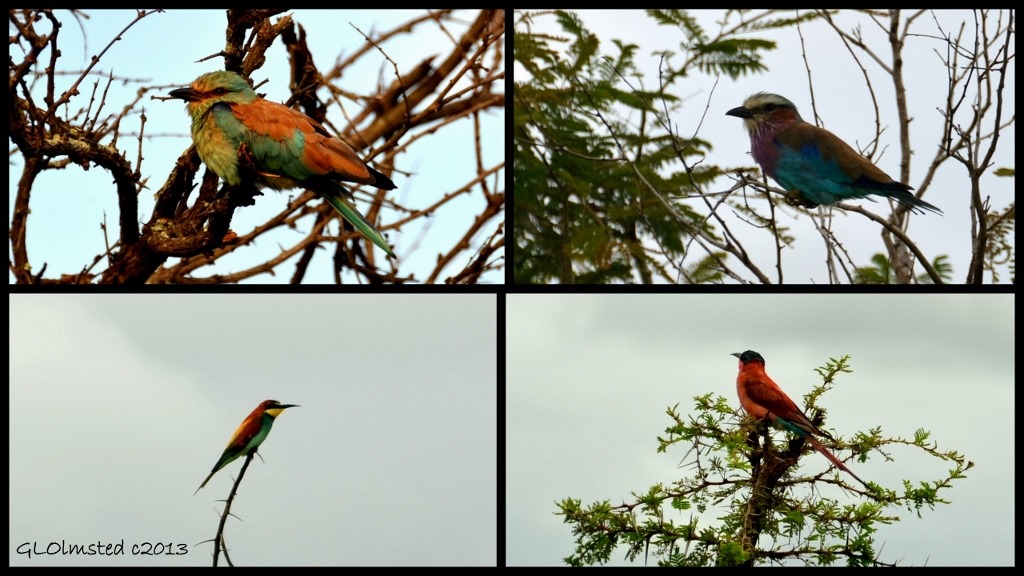
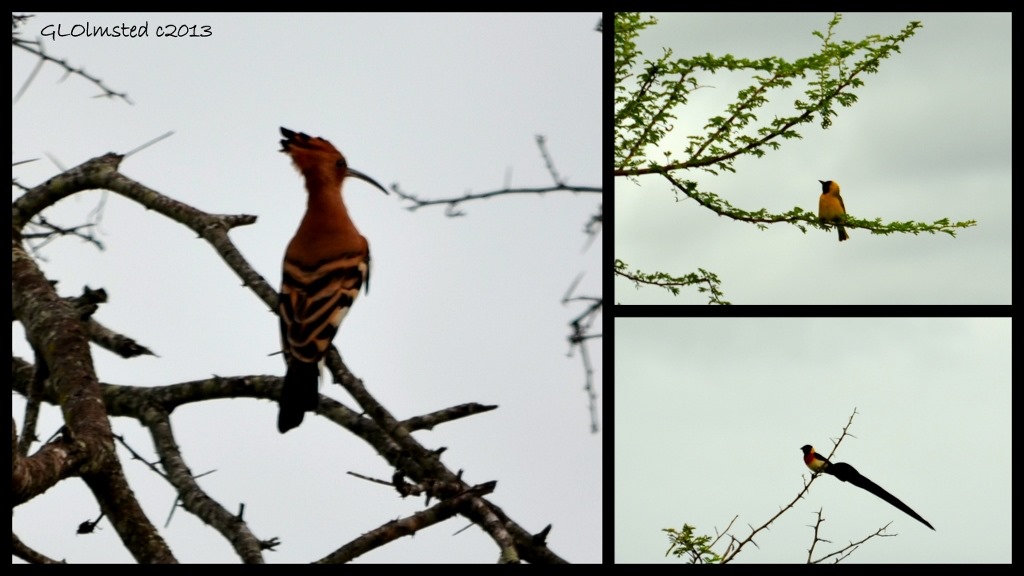
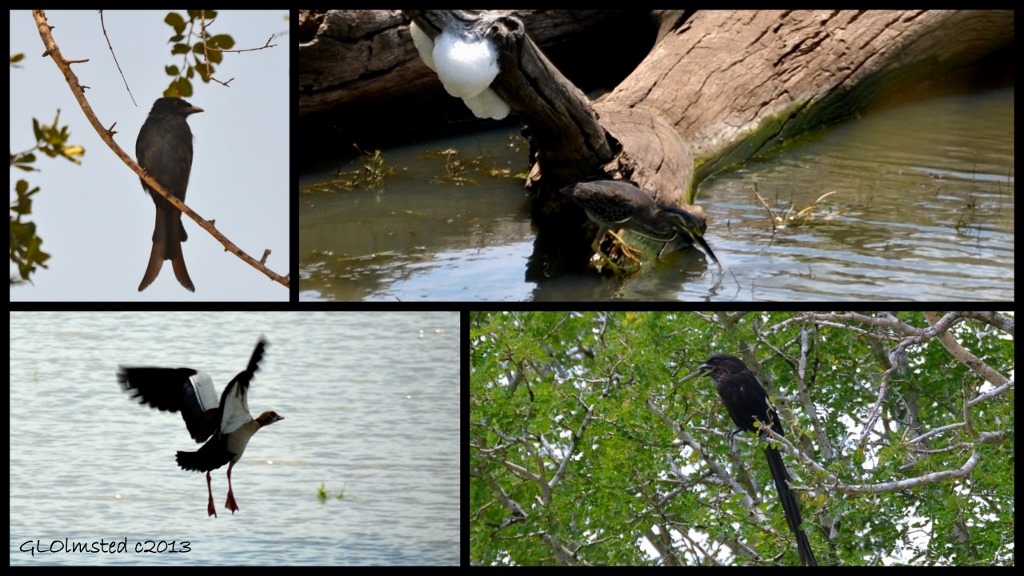
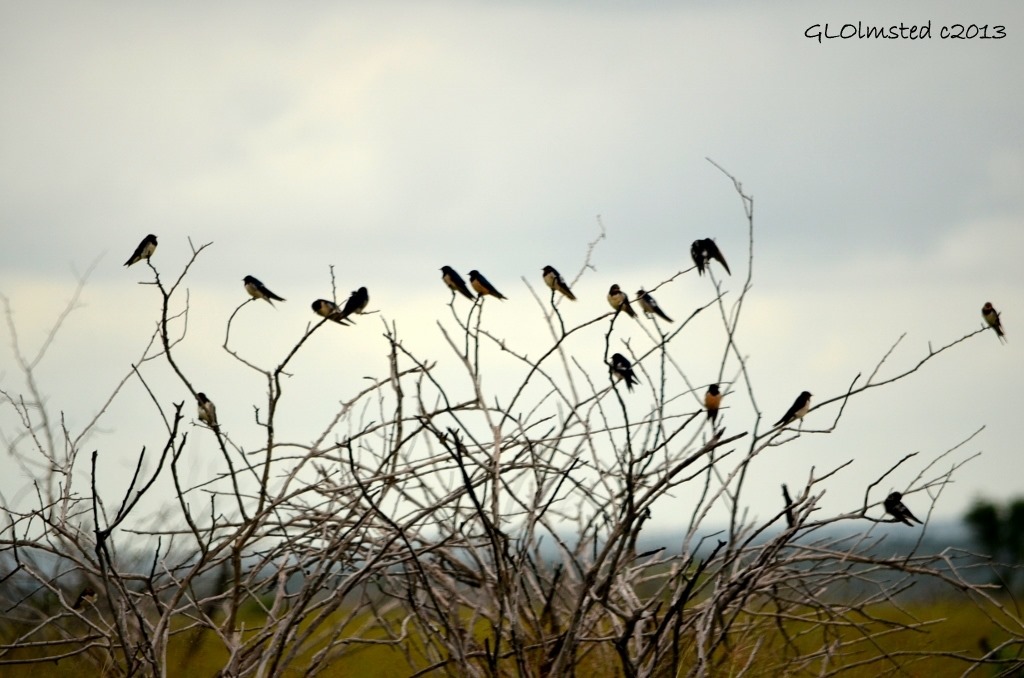
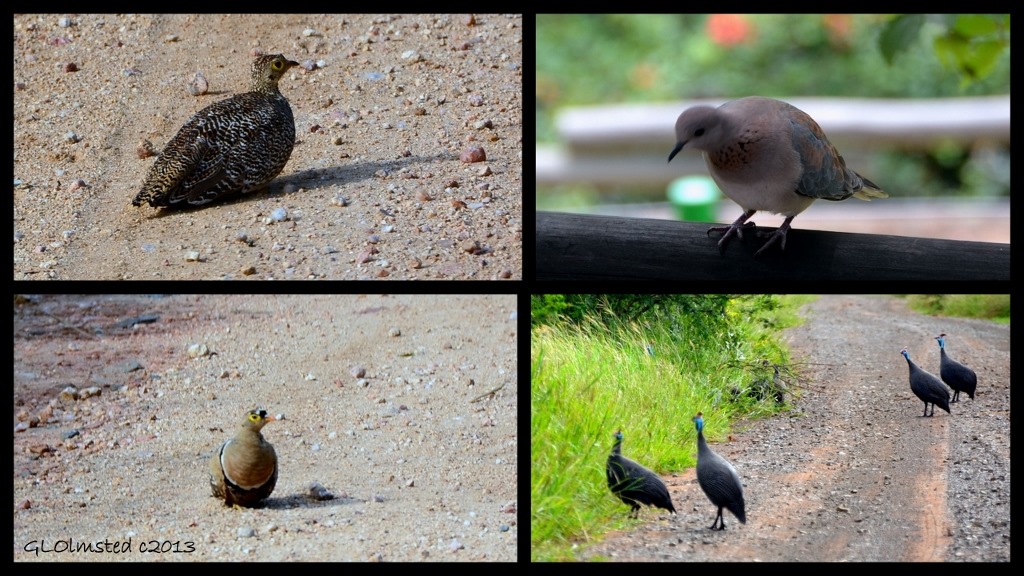
OH MY WORD, Gaelyn. Re-phrase that “not a birder” statement. These photos and the descriptions of every bird are brilliant! I have crept around Africa trying to get decent photos of Bateleurs, Brown Snake Eagles and others. I have also NEVER seen an Long-tailed Paradise Whyah, Scops owl or a Double banded Sandgrouse (and that’s not for want of trying!) Congratulations, my friend. You are now a fully – fledged (pun intended) African birder. (((Hugs))) Jo
Gee thanks Jo. I guess I learned more about these birds working on this post all day than I know about my AZ birds. I look forward to migrating back to SA to add to my list. Maybe we should go birding together.
What a great selection of photos, you have done remarkably well I think to get so many. Two of my favourites are the Fish Eagle, I could listen to it all day, and the Bateleur that has flying skills second to none. Have a good day, Diane
Thanks Diane. I captured way more birds than I thought. Maybe I am becoming a birder.
Did you go game watching or bird watching? WOW! Lots of birds spotted and photographed.
I guess both.
Gaelyn, you have so many wonders in this post that I will have to come back again and again to take it all in.
I know the Ostrich is mainly feathers but am surprised that the bustard is heavier. An overpowering post indeed.
Interesting when I travel far afield how birds seem just as exotic as the other wildlife.
Wow – that is some collection for birds! I think almost all of them would be new for me as well.
Yet another place added to the “must visit” list!
Cheers and thanks for linking to WBW – Stewart M – Melbourne
You should definitely visit South Africa for the birding and other wildlife too.
I love this. Especially the bird that has legs tough enough to withstand snake bites and the owl with bark looking fur that leans sideways.
That little owl would have gone totally unnoticed had it not been for the caretaker.
Anyone who keeps a life list and knows this much about the birds of Africa definitely qualifies as a birder. These are amazing. So much fun to see things I have never ever seen before and probably will not see in real life. Many thanks. Those kingfishers are fabulous. I can’t get a decent picture of our little belted one and yours of those two are GREAT. Long tailed is an understatement for the shrike and the whydah. When I saw the Hoopoe and read that it is the school’s great choice of a mascot, I tried to think of schools with birds as mascots here and could only come up with the Cardinal, the Eagle, the Falcon and the Jayhawk – is that a bird really???.
Guess I should say I’m not an avid birder although I’ve been marking down birds seen in my US bird book for decades. I especially like the Woodland Kingfisher’s bright colors. Of course not being much of a sport fan I wouldn’t know about bird mascots but believe you’re right. Jayhawk is a bird?
I am now a qualified armchair African birder! Great post Gaelyn, I enjoyed all of your photographs! A blue kingfisher that seldom eats fish? Whooda thunk?
I absolutely love the color, and look, of that Woodland Kingfisher.
I wouldn’t run around with ANY sign on my ca.r haha. Super shots of many spectacular birds. There are so so mny. Thanks for showing us many species we may never see. Unless we travel with you of course. MB
I saw quite a few “birder” signs on cars and forgot to get a photo. Was as exciting seeing these birds as all the wildlife. Feel free to join me this winter when I return.
The Jayhawk is a fictitious bird but a bird none the less. Do we not think that the Phoenix was once a real bird so why not a Jayhawk?
I believe the Phoenix had to exist at some time. So why not a Jayhawk. Ever seen a photo of either?
Thank you for sharing these pics!!! I know this post took time to put together but I really appreciate all the information and looks. You’ve really got some wonderful birds on your list…..they are so strange looking. I hope Kathie gets to see these beauties. What in the world is in that water that the poor Stork has to walk through?!!!……looks interesting:) The Hornbills and the Bustards are fascinating to me.
Thanks Chris. I knew you’d like this one. And, yes, it did take a long time to put together. I’m guessing it’s just some kind of algae in the water, nothing toxic. There will be more bird posts from different parts of South Africa. Ready to travel there with me?
I like that little blue, squatty guy!
I love the rather mischievous look it’s giving.
Gaellyn…I think you’re a birder in spite of yourself! Wonderful pictures, love the way you sorted them.. You’ve pretty much written a birder’s guidebook . It sound lovely to be a winter Bee-eater! Much more fun than being a plain old snowbird!
I’m learning to be a better birder. Also like the idea of being a Bee-eater.
And PS…I would have been able to make ten or twelve posts from these amazing collections of photos!
I know, but I still have so much left to post from South Africa.
So we have turned you into a birder now have we? LOL!! A wonderful selection Gaelyn.
You, have turned me into a South African birder.
Wow! What a wonderful selection of birds. Thanks so much for sharing.
Glad you enjoyed. The South African birds seem so exotic.
Awesome post on the African birds. Lucky you! Fantastic post and photos!
Thank you. It is an amazing country.
Gaelyn, these are amazing birds. Most of them I have never heard of or seen. My grandson sat on my lap and looked at them with me! He really liked the video of the stork.
Thanks. I knew you’d like seeing these exotics. I still have more bird shots from South Africa.